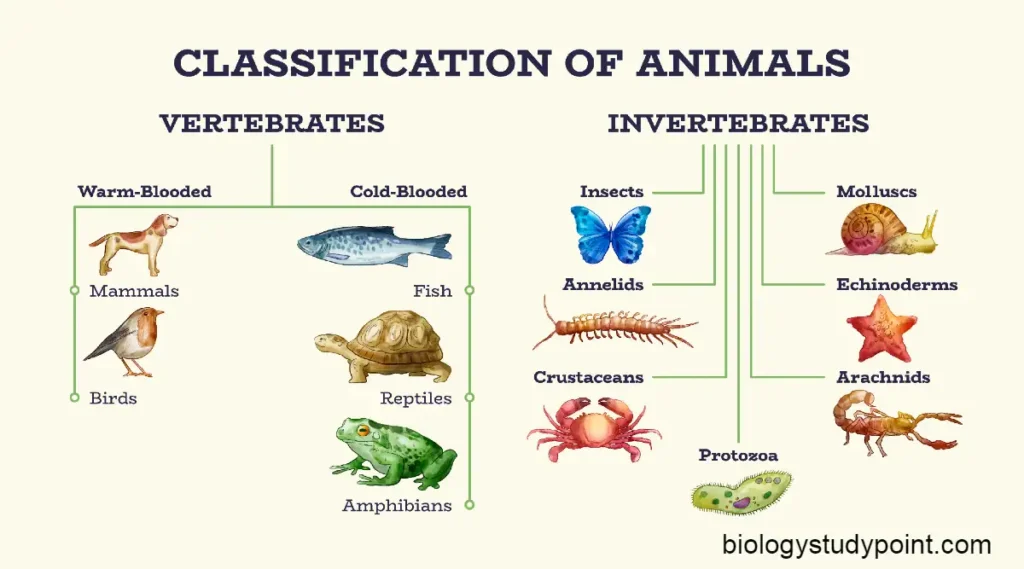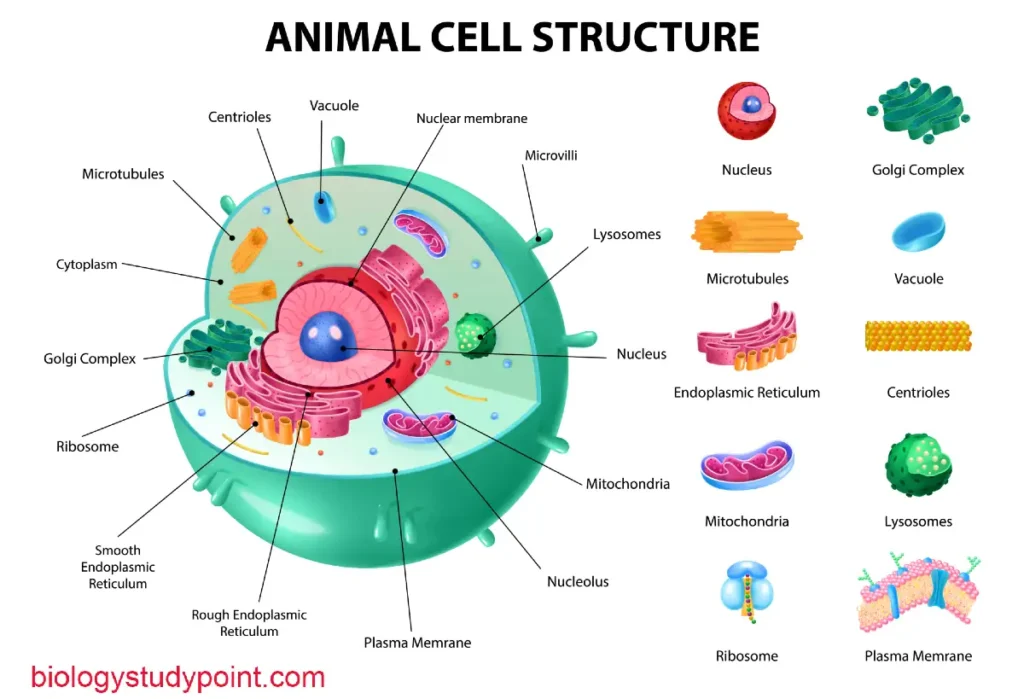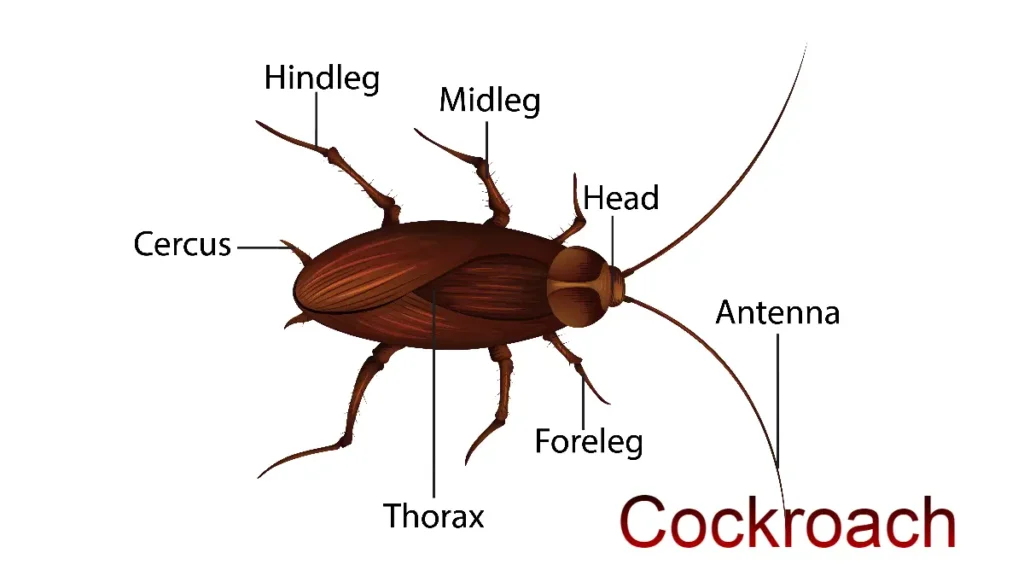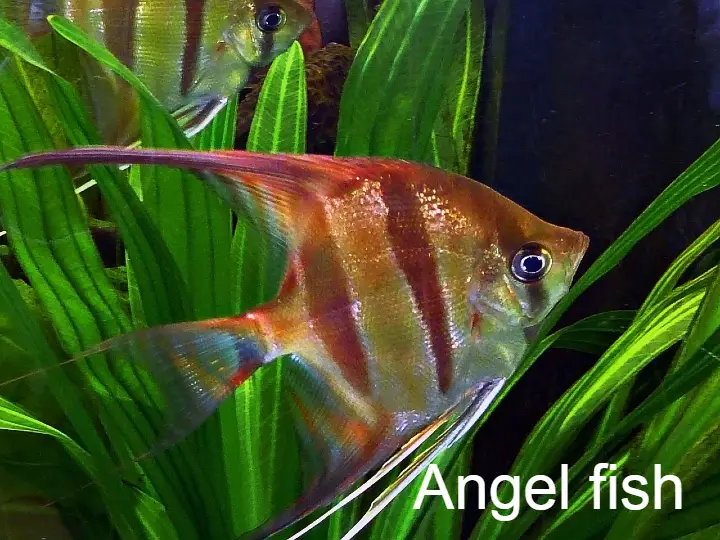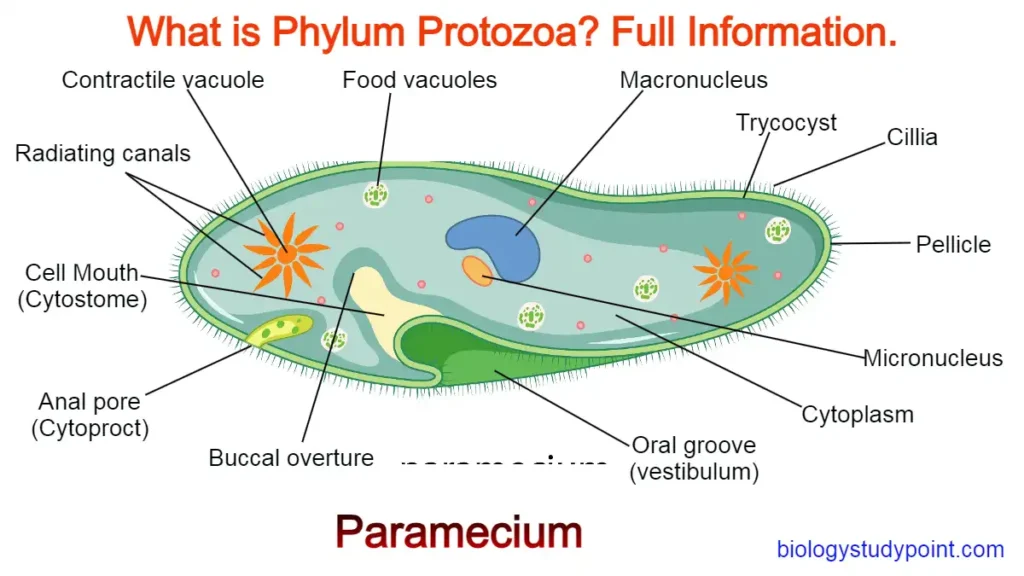Hello friends, welcome to another new article, friends, today we will learn what is asexual reproduction. To know about it step by step completely, then let’s start without wasting time.
What is asexual reproduction?
In asexual reproduction, a single organism can produce offspring. After that, the child is born. They are not only similar to each other; Rather, it is identical or identical to their parent.
They are not only similar in size but also genetically. Organisms that are genetically and morphologically identical. So such organisms are called clones.
It is Uniparental. Meaning the same organism is both mother and father. In these, the process of meiosis, fertilization, genetic variation, and gamete formation does not occur. This reproduction occurs in lower organisms.
How many types of asexual reproduction?
Asexual Reproduction has five types.
- Fission
- Budding
- Fragmentation
- Regeneration
- Vegetative propagation
Let us now know how asexual reproduction in animals takes place.
What is fission?
Fission is primarily seen in single-celled organisms. Fragmentation means to be divided into different parts. This means the formation of a new organism by dividing an organism is called fission.
For example – Amoeba a celled organism divides into two different parts, in this process which is the first nucleus. It divides into two nuclei, this process is called karyokinesis.
After that the cell divides into two cells, this process is called cytokinesis. These dividing cells are now called daughter cells.
Now a question must be arising in your mind, why are they called daughter cells? Why are they not called son cells, these cells will later give birth to two daughter cells, and always a woman gives birth to a child.
Hence, these are called daughter cells, and by fission amoeba, euglena, bacteria, etc. Microorganisms reproduce. It is of two types.
- Binary Fission
- Multiple Fission
What is binary fission?
In this fission, an organism is divided equally into two different cells. What happens in this is that the genetic material of the first organism gets divided into two parts.
It then divides into two separate cells, and each part grows rapidly into an adult organism. This is called binary fission. It is of three types.
- Irregular binary fission or Simple binary fission
- Longitudinal binary fission
- Transverse binary fission
Examples- Amoeba, Paramecium, etc.
Irregular binary fission –
In this fission, there is irregular binary fission, that is, it breaks up anywhere and divides into two cells. Such organisms are made up of similar cells. It is done in a very simple way. Hence, it is called simple binary fission.
Example – Amoeba, Entamoeba.
Longitudinal binary fission –
In this binary fission, organisms divide longitudinally, hence it is called Longitudinal binary fission.
Example – Euglena, Vorticella.
Transverse binary fission –
In this binary fission, organisms divide in a transverse form, so this process is called transverse binary fission.
Examples – Paramecium, and Balantidium.
What is multiple fission?
When the parent divides to form more than two new organisms, such a process is called multiple fission.
In this fission, when the organism comes under unfavorable conditions or in a dirty environment, then it makes layers to protect itself, and inside it does multiple fission, that is, divides the nucleus many times. These are also called spores.
And these spores become cells. After that, when favorable conditions occur, the layers break, and all the cells come out.
For example, the amoeba performs binary fission, but when disaster strikes the amoeba or comes in a dirty environment, it surrounds itself with three protective layers to protect itself. These layers are called cysts, this process is called cysts or encystation.
Now the amoeba is in a dire situation, due to which it wants to give birth to more children so that some survive, due to this it starts multiple fragmentation inside the cyst wall.
The spores that are formed inside the cyst wall are called spore amoebae or Pseudopodiospores, and these spores become amoeba, under favorable conditions, this cyst wall breaks and the amoeba comes out, and this process is called sporulation.
What is budding?
When a bud or bud is formed on the parent’s body, and after that, a new organism is formed from that bud, this process is called budding. Budding produces small buds that are initially attached to the parent cell and later separate to mature into a new organism.
Examples – Hydra, Yeast, etc.
How many types budding?
Budding is of two types.
- Exogenous
- endogenous
Exogenous –
It is called external budding because the budding occurs on the outer surface of the body. For example, in yeast, this division is not uniform and a small bud is produced, which is initially attached to the parent cell, and later separates and matures into a new yeast organism. Similarly, in a hydra, buds emerge from the side and later divide to become a mature hydra.
Example – Hydra yeast etc.
Endogenous –
There is internal budding. When buds are formed inside the parent, then a new organism is formed from these buds, then this process is called Internal budding.
For example, inside the sponge, buds are formed which are called Gemmules. Many gemmules are formed inside such a sponge. Which are called Archeocyte cells.
When these cells are in favorable conditions, they come out and become new sponges. These cells can generate new cells. This process is called end budding.
What is fragmentation?
In this, the body of the organism is broken into different pieces because its body structure is very simple. Therefore, easily broken down, and this body piece individually becomes a new organism, then this process is called fragmentation.
Examples – Planaria, Protonema, and Filamentous algae.
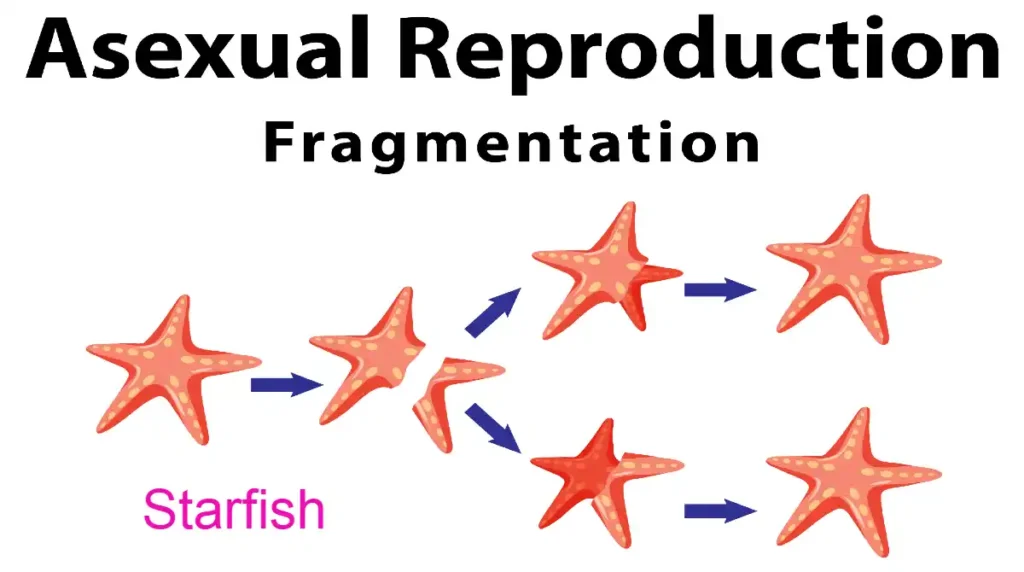
What is Regeneration?
Regeneration is a natural process in which any part of the body of an organism such as cells, tissue, organs, etc. after damage or deterioration, the process of repairing, rebuilding, or replenishing it again is called Regeneration.
Types of Regeneration –
There are two types of Regeneration.
- Epimorphosis
- Morphollaxis
Epimorphosis –
In this, only the broken part of the body develops again, and not the broken part of the body develops into a new organism. This action takes place in the highest living beings.
For example, after the tail of a lizard is cut, a new tail develops again, but the chopped tail does not become a lizard again. On this side, the arm or arm of the starfish is cut off and re-developed.
Examples – Lizard, Starfish, etc.
Morphollaxis –
In this also the cut part of the body re-develops, but in this, the cut part of the body becomes a new organism. This action takes place in microorganisms or the lowest organisms.
For example, if the hydra is cut from the middle, then the head part of the hydra re-develops the lower part, which is the cut lower part. It develops the upper part i.e. the head and becomes the new organism Hydra.
Examples – Hydra, Planaria, etc.
What is vegetative propagation?
This is the method of Asexual Reproduction. A new plant develops from any vegetative part of the plant body (except the flower), this process is called vegetative propagation.
Types of Vegetative Propagation –
It is of two types.
- Natural Vegetative Propagation
- Artificial Vegetative Propagation
Natural Vegetative Propagation –
In plants, buds develop from vegetative organs to form new plants, so the spontaneous reproduction in plants is called natural vegetative propagation. Now, this action can be done by many parts of plants.
This vegetative propagation takes place by the following organs.
- By Stem
- By Roots
- By Leaf
First of all, let us know how it is done by stem.
By Stem –
What happens in this is that the buds located on their festival joints give birth to a new plant.
Example –
Underground stems –
It includes potatoes, ginger, turmeric, etc. What is a potato? Potato is a tuber, Potato has small eyes. This is called the flow treaties. When we sow potatoes inside the soil, new plants are formed from them.
Similarly, what is ginger and turmeric are rhizomes. They also have flow treaties. When these are shown in the soil, new plants are formed from them.
This is where Jimikand comes in. What is a yam? Yam is dense. So are the onion and garlic. What are Onion and Garlic? It is a sweet potato.
Semicircular stems –
Couch grass comes under it. It is superimposed. Means growing above the ground by sticking to the ground.
It also includes water hyacinth. It is geostrategic. It is also called the terror of Bengal. It grows very fast, and then peppermint comes. What is mint? It is ultimately grounded. Then comes the strawberry, it is earthy.
Now we will talk about pneumatic stem –
Pneumatic Stems –
Under this comes sugarcane and ruscuta reflexa. It is also grown from the stem.
Just now, we have studied the stem. Now let’s talk about how it happens through the roots.
By Roots –
Under this, there are dahlias and sweet potatoes. Their roots swell after collecting food and go into dormancy. The adventitious buds on these give birth to a new plant in the next reproductive period.
This is done, now let’s talk through the roots. How is it done through leaves?
By Leaves –
In this, in some plants, the leaves store food, which gives birth to new plants by forming new buds on them.
Example – Bryophyllum (stonecrop).
So far, we have learned about natural vegetative propagation. Now we will talk about artificial somatic amplification.
Artificial Vegetative Propagation –
Under this, many new plants are developed from a new plant by using the methods created by it. So it is called artificial vegetative propagation.
Also, read – What are Phylum protozoa?
Methods of artificial vegetative propagation –
It has three methods.
- Cuttings
- Layering
- Grafting
First of all, let’s talk about cutting.
Cuttings –
In this method, any small part of the plant (stem, leaf, root) which has sprouted, is cut, and a new plant is grown by giving it the facility of soil and water.
Stem Cutting –
In this method, the stem of the plant is cut into small pieces and planted in the ground.
For example – Roses, Grapes, Sugarcane, etc.
Root Cutting –
In this method, the root pieces are planted in the vertical position. So that the adventitious buds present at the top can erupt, and a new plant can be formed.
Examples – Guava, Cherry, Lemon, apple, etc.
Now we will talk about Layering –
Layering –
In this method, without separating the stem or root from the main plant, the formation of adventitious roots is induced in it. From which new shoots emerge, after that, it is separated from that plant and planted in a new place. Due to this, a new plant is formed.
It has two methods. Let’s get to know about them too.
Mound Layering –
In this method, the inclined branch of the stem is pressed into the ground. (At least one of the cultivars should be buried in the ground) After some time, the adventitious roots begin to emerge from the roots of the stem buried in the ground.
At the right time, this branch is cut from the plant and separated along with the earthen mass. After that, it is planted in a new place. Due to this, a new plant is formed.
Example – Jasmine, Mogra, etc.
Air layering –
This method is used in trees whose branches are thick. On the healthy part of the branch, remove the bark from all sides and cover that part with wet soil or wet cotton, which keeps this part moist.
This covered part is called “gutti”. Drop-by-drop water is given by a vessel on the gutti. Roots appear on it after four to eight weeks. Then this part is separated and planted in the soil. Due to this, a new plant is formed.
Now we will talk about planting, so let’s start.
Grafting –
In this method, the stem of two different plants is cut and joined in such a way that they grow into a plant, one of the two cut stems is rooted in the stem which is called “Stock“. , and the second stem is cut without roots, it is called “Scion“.
There are four methods of planting. Who are the ones, let’s know about them too.
- Whip/Tongue Grafting
- Wedge Grafting
- Crown Grafting
- Bud Grafting
Whip/Tongue Grafting –
As you are aware. Planting has two stems. One of which is attached to the root, and the other is without a root. In this method, both branches are cut diagonally in the shape of N. After that, both branches were joined and tied. Goes.
Wedge Grafting –
In this method, both the stems are cut in the shape of a V, after which both the branches are joined and tied.
Crown Grafting –
In this method, the rooted stem is cut in a V shape at the edge, its other stem is joined and tied. Just as the crown is seen rising from all sides. It appears in the same way. That’s why it is called “Crown Grafting“.
Bud Grafting –
In this method, a straight incision is made in the rooted stem, and in that which is the stem with other leaves or buds. It is tied through the incision.
Friends, what is asexual reproduction? Has been studied thoroughly.
I hope you guys what is asexual reproduction. You must have liked the information given. If you liked this information, then please share it as much as possible.
If you have any suggestions, then please comment.
Thank you











